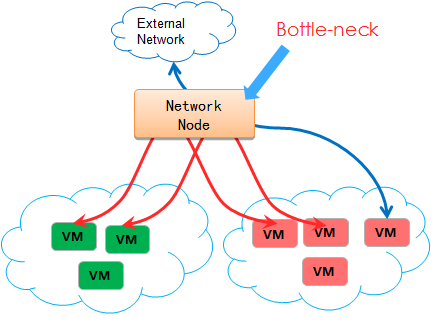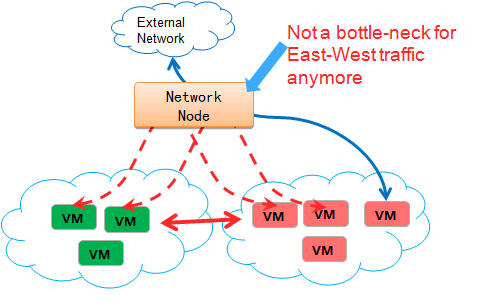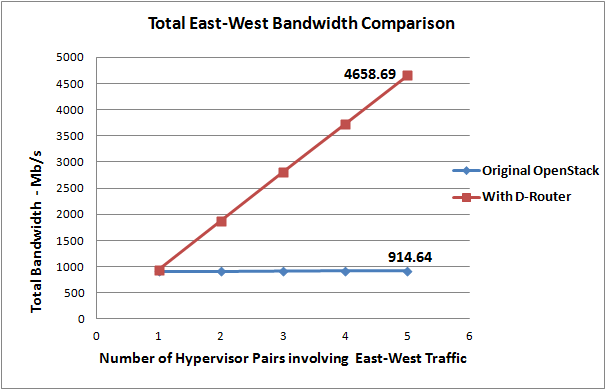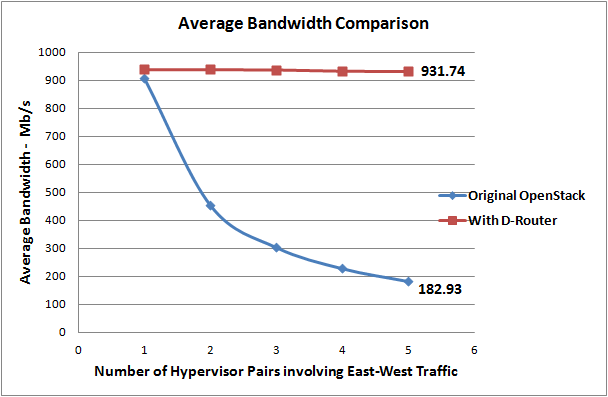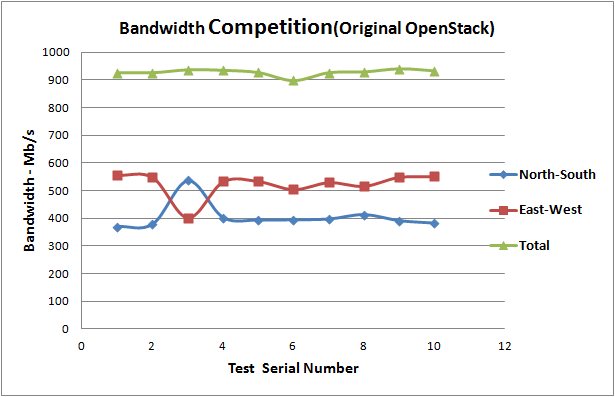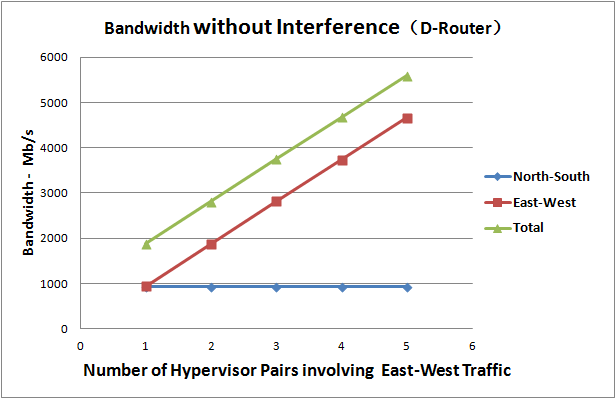Difference between revisions of "Distributed Router for OVS"
| Line 20: | Line 20: | ||
'''Here is a comparison between original OpenStack and a OpenStack with distributed router.''' | '''Here is a comparison between original OpenStack and a OpenStack with distributed router.''' | ||
| − | * | + | * For original implementation, even there are more hypervisor involve in the communication, max total bandwidth is the same. |
| + | While for VDR, total bandwidth is not a static number, under high concurrency, the more hyperviosrs involve in, the more East-West bandwidth we can get. | ||
[[File:Vdr total bandwidth.png|none|default|Total East-West Bandwidth Comparison]] | [[File:Vdr total bandwidth.png|none|default|Total East-West Bandwidth Comparison]] | ||
| + | * Under high concurrency, since there's a static max bandwidth for original router, each VM only obtains a very small piece. If there're 20 VMs are communicating, and 10 pairs of hypervisors are involved, then each pair get less than 100Mb bandwidth on average.(under GE environment). | ||
| + | By introducing VDR, each pair of hypervisor always get a stable bandwidth, which equals the max capability of the physical link between them. | ||
| + | [[File:Vdr_Average.png|default|Total East-West Bandwidth Comparison]] | ||
| + | * | ||
| + | [[File:Vdr_Competition.png|default|Total East-West Bandwidth Comparison]] | ||
| − | + | * | |
| − | |||
[[File:Vdr_No_competition.png|default|Total East-West Bandwidth Comparison]] | [[File:Vdr_No_competition.png|default|Total East-West Bandwidth Comparison]] | ||
Revision as of 09:30, 22 October 2013
Scope
VDR(Virtual Distributed Router) is going to provide an option for user, to creat distributed routers, which allow one-hop forwarding for east-west traffic in virtualized networks. This will dramatically increase the total bandwidth, and also bring other advantages.
Brief Introduction
- The goal of this blueprint is to implement distributed router in openvswitch plugin. Openvswitch plugin is the most popular plugin nowadays. However, lots of people found that under heavy east-west traffic, current l3-agent router becomes the bottle neck. As shown in the figure below:
- With the help of distributed router in ovs plugin, it's not necessary for east-west traffic to traverse network node to get routing decision anymore. Instead, those traffic will be delivered directly from the source hypervisor to the destination hypervisor. As shown below:
- The test result of our POC shows distinct performance imporvement on several aspects. Advantages we can get:
- 1. East-west total throughput will increase distinctly when more hypervisors are involved.
- 2. Under high concurrency of east-west traffic, on average, each VM will obtain a better bandwidth.
- 3. North-south and east-west traffic don't impact each other anymore. North-south traffic enjoys all the bandwidth of router exclusively.
- 4. No more unnecessary circuitous path, when east-west session happens between two VMs on the same hypervisor.
Performance Comparison
Here is a comparison between original OpenStack and a OpenStack with distributed router.
- For original implementation, even there are more hypervisor involve in the communication, max total bandwidth is the same.
While for VDR, total bandwidth is not a static number, under high concurrency, the more hyperviosrs involve in, the more East-West bandwidth we can get.
- Under high concurrency, since there's a static max bandwidth for original router, each VM only obtains a very small piece. If there're 20 VMs are communicating, and 10 pairs of hypervisors are involved, then each pair get less than 100Mb bandwidth on average.(under GE environment).
By introducing VDR, each pair of hypervisor always get a stable bandwidth, which equals the max capability of the physical link between them.

